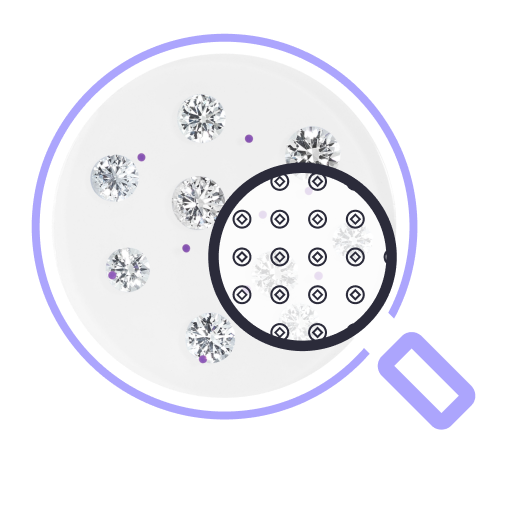Diamonds
vs. Gold
Explore an objective
comparison of both assets.

Investing in commodities like diamonds and gold offers a unique combination of benefits that can enhance and protect your investment portfolio. These tangible assets provide a hedge against inflation and market volatility. Discover how these precious commodities can strengthen your financial strategy.
What Are The Key Benefits of Investing in Commodities?
Stability in Volatility
Unlike stocks and bonds, commodities often maintain their value during economic uncertainty, offering a stable investment alternative.
Inflation Hedge
Both diamonds and gold historically outperform other assets during periods of high inflation, helping to preserve purchasing power.
Risk Diversification
Commodities typically don't correlate directly with stock markets, which means they can rise in value even when other investments fall.
Tangible Assets
Physical ownership of a valuable resource provides a layer of security and intrinsic value not subject to the whims of financial markets.
Comparing Diamonds and Gold: Which is the Better Investment?
Explore key investment factors to see how diamonds stack up against gold.
 Diamonds
Diamonds Gold
Gold
Curious about how you can start investing in diamonds?
Read our latest diamond investment guide.
Comparing Diamonds and Gold: Overview of Fundamentals
 Diamonds
Diamonds Gold
GoldWhich Factors Should I Consider Before Investing?
When considering adding commodities such as gold and diamonds to a financial portfolio, it is important to understand commonly misconceived factors:
- Price Transparency
- Gold: Benefits from globally recognized pricing standards, such as the London Bullion Market Association (LBMA) and COMEX futures prices, providing clear benchmarks for investors.
- Diamonds: Pricing available on Bloomberg and LSEG (DIAMINDX), which simplifies investment decisions by providing a transparent, market-driven pricing for standardized diamond commodities.
- Resale Opportunities
- Gold: Highly liquid, with numerous resale options including bullion dealers, online platforms, and financial markets worldwide.
- Diamonds: Historically challenging to resell, but Diamond Standard commodities are fungible and can be traded on the Diamond Standard Spot Market, providing liquidity similar to gold and reducing high fees associated with auction houses.
- Security and Loss Prevention
- Gold: Typically stored in secure vaults or safety deposit boxes due to its value, though storage fees can be moderate.
- Diamonds: Securely vaulted and insured with low storage fees. Each Coin and Bar is represented by a blockchain token, ensuring real-time authentication and auditing.
- Impact of Synthetic Variants
- Gold: Not easily replicated, hence limited synthetic versions. Gold generally maintains its market value.
- Diamonds: Natural diamonds retain intrinsic value, in contrast with lab-grown diamonds that frequently lose value over time.
Frequently Asked Questions (FAQ)
What Are The Best Ways to Invest in Diamonds?
Diamonds have been a long-ignored investment despite its scarcity and capability to hedge against inflation. Diamond Standard invented the only regulated diamond commodity. Each fungible Diamond Standard Coin & Bar contains 8 to 9 natural diamonds with similar geological scarcity.
By standardizing diamonds, the diamond market has become publicly accessible. Just like gold, Diamond Standard offers similar ways to participate in diamond commodity investments.

Carats
Commodity Token

Diamond Standard Coins
Fungible Commodity

Diamond Standard Bars
Fungible Commodity

Diamond Standard Fund
Private Units
Slide to see more
